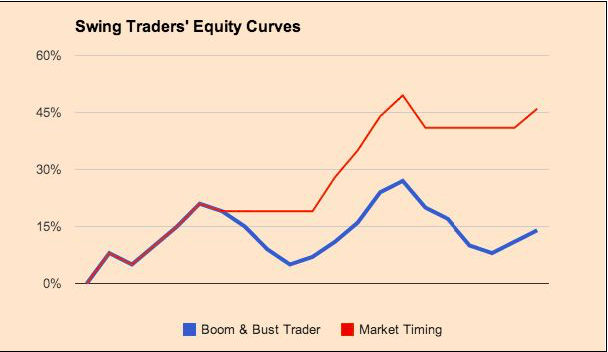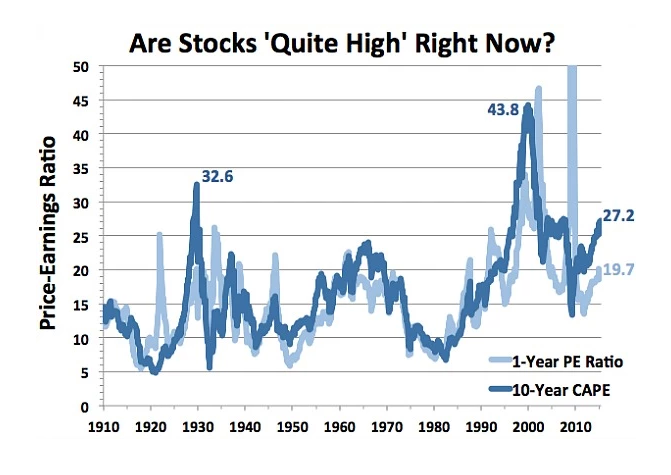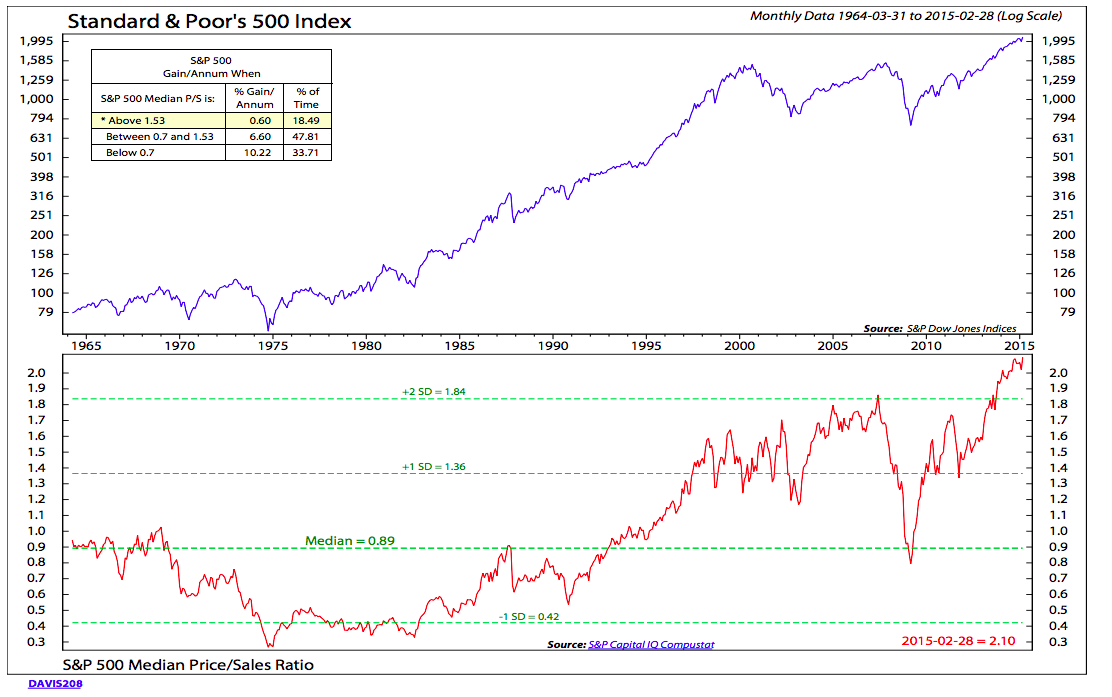In Thursday's missive, I very briefly discussed "recency bias" as it related to sentiment based economic surveys. I spent much of last evening pondering the issue of "recently bias" as it relates to the overall macro market environment. Carl Richards, back in 2012, commented:
"We rely on habit to help us make things easier because few people want to reinvent their lives every day. But this habit of forming habits also does something else. In academic circles, it's called the recency bias, and it can trick us into making decisions we might not make otherwise."
"The recency bias is pretty simple. Because it's easier, we're inclined to use our recent experience as the baseline for what will happen in the future. In many situations, this bias works just fine, but when it comes to investing and money it can cause problems.
When we're watching a bull market run along, it's understandable that people forget about the cycles where it didn't. As far as recent memory tells us, the market should keep going up, so we keep buying, and then it doesn't. And unless we've prepared for that moment, we're shocked and wondered how we missed the bubble.
When the market is down, we become convinced that it will never climb out so we cash out our portfolios and stick the money in a mattress. We know the market isn't going back up because the recency bias tells us so. But then one day it does, and we're left sitting on a really expensive mattress that's earning nothing."
The point Carl makes is important. The longer a bull-market runs, the more inclined we become to believe "it will never end."
It is during these long, and seemingly unending runs, that we begin to dismiss the most simplistic rules of investing and opt for "buy and hold" strategies that are historically responsible for cataclysmic losses of investment capital.
What is most interesting about "buy and hold" investing is that the group that generally promotes it receive a direct benefit (i.e. fees) for keeping investors invested in the market. Secondly, why is it that every great investor in history from Benjamin Graham to Paul Tudor Jones to Bob Farrell all adhered to basic investment disciplines of buying low and selling high?
This week's reading list is a view on investing, the markets and potential outcomes to try and limit the potential for "recency bias" by focusing on the potential for outcomes. In other words, what is the "margin of safety" for investors now?
1) When In Doubt, Stay Out by Ivanhoff via Ivanhoff Capital
"When an event repeats frequently, it becomes a pattern. A pattern, in which a lot of people wholeheartedly believe in and act upon. Buying oversold dips in the major indexes has been very lucrative in the past few quarters. Even more so, in the past few months, which have been a poster child of range-bound markets. Will the current dip be any different? No one really knows. There are some good reasons to believe so:
seasonality;
poor reaction to decent earnings reports;
lack of great long setups;
I truly believe that knowing when to be out of the market is the single most valuable trading skill anyone could develop. Why do I think so? Because, when markets are trending most setups work, most breakouts work and have a decent follow-through, it is a lot easier to make money. When markets are choppy, everything turns upside down and it is becomes difficult not to lose money. Be aggressive when it pays to be aggressive. Make sure you don't give back most of your gains when the market environment worsens for your approach. For better of for worse, financial markets are one of those business fields, where working smart always trumps working hard."
Read Also: 13 Investing Rules From Paul Tudor Jones by Ivanhoff via Ivanhoff Capital
2) Yellen Says Stocks Might Be Overvalued by Matt O'Brien via The Washington Post
"Now, stocks have cooled off since the start of the year, but not that much. So does that mean stock prices are "quite high"? Well, that depends on how you look at it. Take Robert Shiller's cyclically-adjusted price-earnings ratio, or CAPE, which looks at the past ten years of earnings to figure out how pricey stocks are today. The idea here is that it smooths out any big ups or downs, and shows us how fairly valued—or not—stocks are. And by this measure, as you can see below, stocks really are getting expensive."
Read Also: Yellen, A "Bear" Late & A "Dollar" Short by Jeffrey Snider via ZeroHedge
Read Also: Charts That Should Give Traders Pause by Michael Kahn via Barron's
3) Stocks Are The Most Expensive, Well Ever by Meb Faber via Meb Faber Research
"I jabber a lot about valuation metrics here, and I mentioned this one on Twitter (NYSE:TWTR) the other day. Its doesn't need much explanation – the median stock in the S&P 500 is the most expensive it has even been (for as long as we have data). That's never a good sign!
If your favorite valuation indicator is not at "the highest ever" , many valuation indicators and now at "the highest ever except 2000″. That's not good company unless you are a short seller.""
Read Also: US Equity Valuations: To Be Dismissed by BCA Research
4) What 118 Fed Rate Increases Since 1948 Show by Simon Kennedy via Bloomberg Business
"Since 1948, the Fed has increased its benchmark on 118 occasions against a quarterly backdrop in which the average growth in nominal GDP was an average 8.6 percent, Deutsche Bank's (XETRA:DBKGn) strategists wrote in a report published Wednesday.
Only in the third quarters of 1958 and 1982 did the Fed shift when nominal growth was undershooting 4.5 percent and the latter action was even reversed a month later.So for virtually every rate increase since Harry S. Truman was in the White House, nominal GDP was growing 4.5 percent or faster, with 112 occurring when it was above 5.5 percent."
Read Also: The Mistake Everyone Is Making About Fed Rate Hikes by Lance Roberts
5) Little Margin Of Safety Left For Investors by Doug Kass via Doug Kass' Tumblr
"Despite protestations from certain market prognosticators and fast talkers, no one knows this answer for sure (I certainly don't). Neither economic forecasts nor risk ranges, quantitative models nor any other economic or technical signpost guarantees investment success in the hunt for intrinsic value. As I have written, there is no secret market sauce.
We can just try be logical, rely somewhat on history, depend on the statistical flow of economic statistics and, from there, make an educated guess, as there are few certain truths in the investing and trading games.
"After all, according to The Oracle (NYSE:ORCL), 'price is what you pay, value is what you get.'
Read Also: The Trouble With Factors




